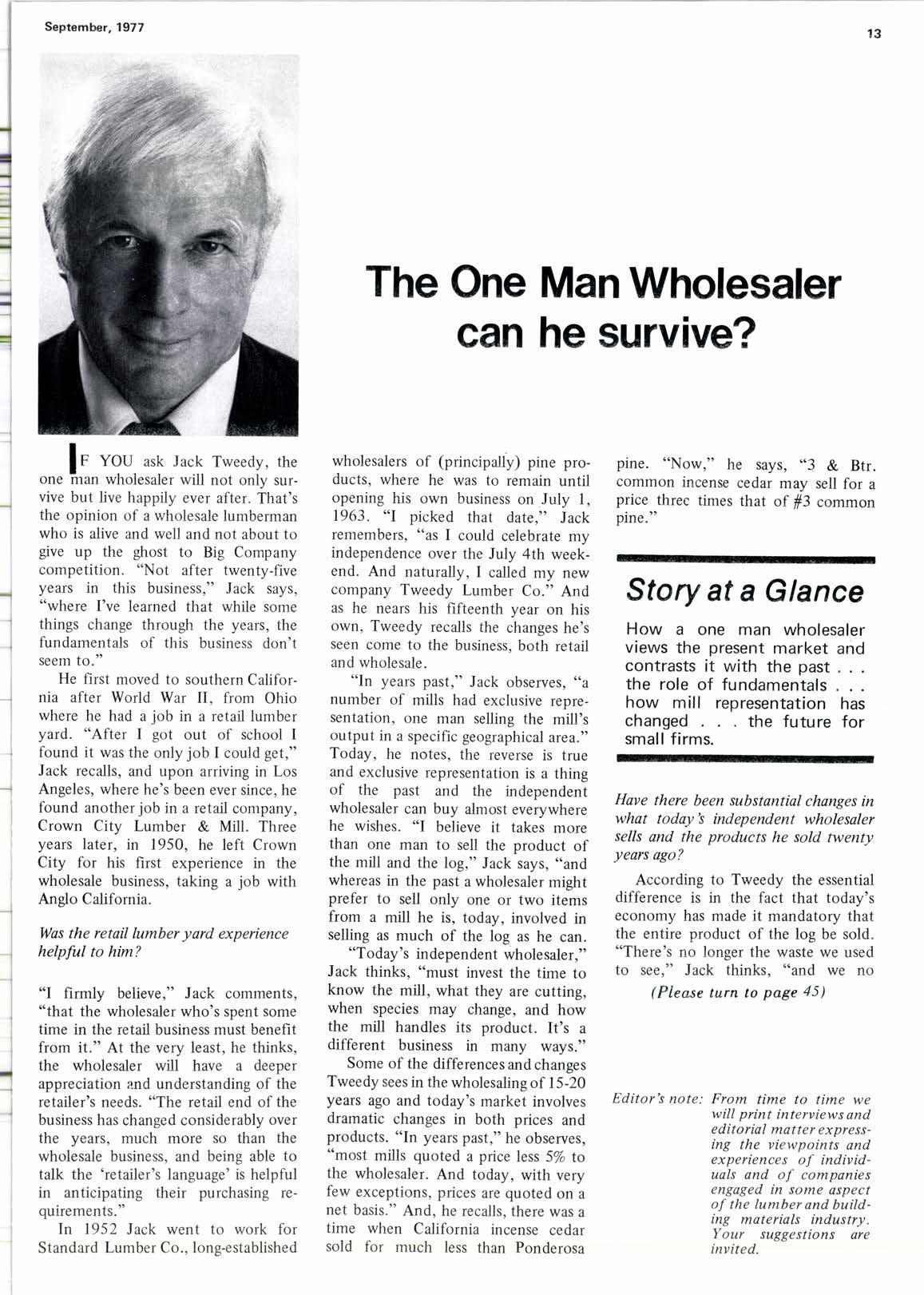
2 minute read
The One Man Wholesaler can he survive?
wholesalers of (principally) pine products, where he was to remain until opening his own business on July 1, 1963. "I picked that date," Jack remembers, "as I could celebrate my independence over the July 4th weekend. And naturally, I called my new company Tweedy Lumber Co." And as he nears his fifteenth year on his own, Tweedy recalls the changes he's seen come to the business, both retail and wholesale.
"In years past," Jack observes, "a number of mills had exclusive representation, one man selling the mill's output in a specific geographical area." Today, he notes, the reverse is true and exclusive representation is a thing of the past and the independent wholesaler can buy almost everywhere he wishes. "I believe it takes more than one man to sell the product of the mill and the log," Jack says, "and whereas in the past a wholesaler might prefer to sell only one or two items from a mill he is, today, involved in selling as much of the log as he can.
"Today's independent wholesaler," Jack thinks, "must invest the time to know the mill, what they are cutting, when species may change, and how the mill handles its product. It's a different business in many ways."
Some of the differences and changes Tweedy sees in the wholesaling of 15-20 years ago and today's market involves dramatic changes in both prices and products. "In years past," he observes, "most mills quoted a price less 5% to the wholesaler. And today, with very few exceptions, prices are quoted on a net basis." And, he recalls, there was a time when California incense cedar sold for much less than Ponderosa pine. "Now," he says, "3 & Btr. common incense cedar may sell for a price threc times that of f3 common pine."
Story at a Glance
How a one man wholesaler views the present market and contrasts it with the past the role of fundamentals how mill representation has changed the future for small firms.
Have there been substantial changes in what today \ independent wholesaler sells and the products he sold twenty years ago?
According to Tweedy the essential difference is in the fact that today's economy has made it mandatory that the entire product of the log be sold. "There's no longer the waste we used to see," Jack thinks, "and we no (Please turn to page 45)
Editor's note: From time to time we will print interviews dnd edi to rial mat te r ex pre ssing the viewpoints and experiences of individuals and of companies engaged in some aspect of the lumber and building materiols industry. Your suggestions are invited.
CtIFF-HANGER - Precipitous hillside overlooking scenic Kaneohe Bay on Windward 0ahu, Hawaii, creates picture-book setting for Kyoto Farmhouse. Pole design helps preserve natural ground contours, eliminating costly grading and construction of retaining walls. House is adapted to site through use of poles of varying length. For safeguarding against decay and insect attack, poles and all other structural lumber were pressure treated with "Wolman" chemicals, produced by Koppers Co. Processing was by Honolulu Wood Treating Co., Ltd.










